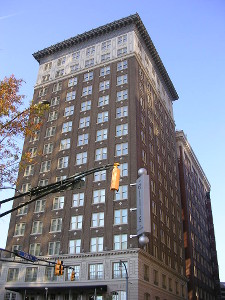
Photo by Eoghanacht, 2007.
Introduction
The Reverend Dr. Martin Luther King, Jr. once observed that eleven o’clock on Sunday morning is the most segregated hour in the United States.[1] But segregation goes beyond a separation between black churches and white churches. There is a tremendous variety of religious communities in the US - Hindus, Muslims, Jews, Christians, Buddhists, Pagans, and others. The history that led to this variety within the US, however, is not innocent. Religious practices of contemporary Native American people are indelibly marked by the devastation of colonialism; the Black church grew out of a nightmarish legacy of mass kidnapping and enslavement; and myriad other forms of religious practice were brought to these shores by immigrants - some of whom left their homelands under duress and some of whom met with discrimination, humiliation, and violence upon arrival. The variety of religious communities that exists in the United States is inextricably bound up with the history of power and its abuses through such guises as colonialism, imperialism, slavery, and globalized capital. Read more » [PDF 2.9 MB]
[1] Joseph Barndt, Becoming an Anti-Racist Church: Journeying Toward Wholeness (Minneapolis, MN: Fortress Press, 2011), 1. Dr. King had close connections with Black LGBTQ people, including Bayard Rustin and James Baldwin. See also Brother Outsider: The Life of Bayard Rustin, dir. Nancy D. Kates and Bennett Singer (New York City: The American Documentary, 2003); and James Baldwin: The Price of the Ticket, dir. Karen Thorsen (New York: WNET/American Masters, 1989). The Bayard Rustin Residence in the Chelsea neighborhood of New York City, New York was added to the NRHP on March 8, 2016.
The views and conclusions contained in the essays are those of the authors and should not be interpreted as representing the opinions or policies of the U.S. Government. Mention of trade names or commercial products does not constitute their endorsement by the U.S. Government.
Part of a series of articles titled LGBTQ America: A Theme Study of Lesbian, Gay, Bisexual, Transgender, and Queer History.
Previous: LGBTQ Military Service
Next: LGBTQ and Health
Last updated: August 11, 2017
